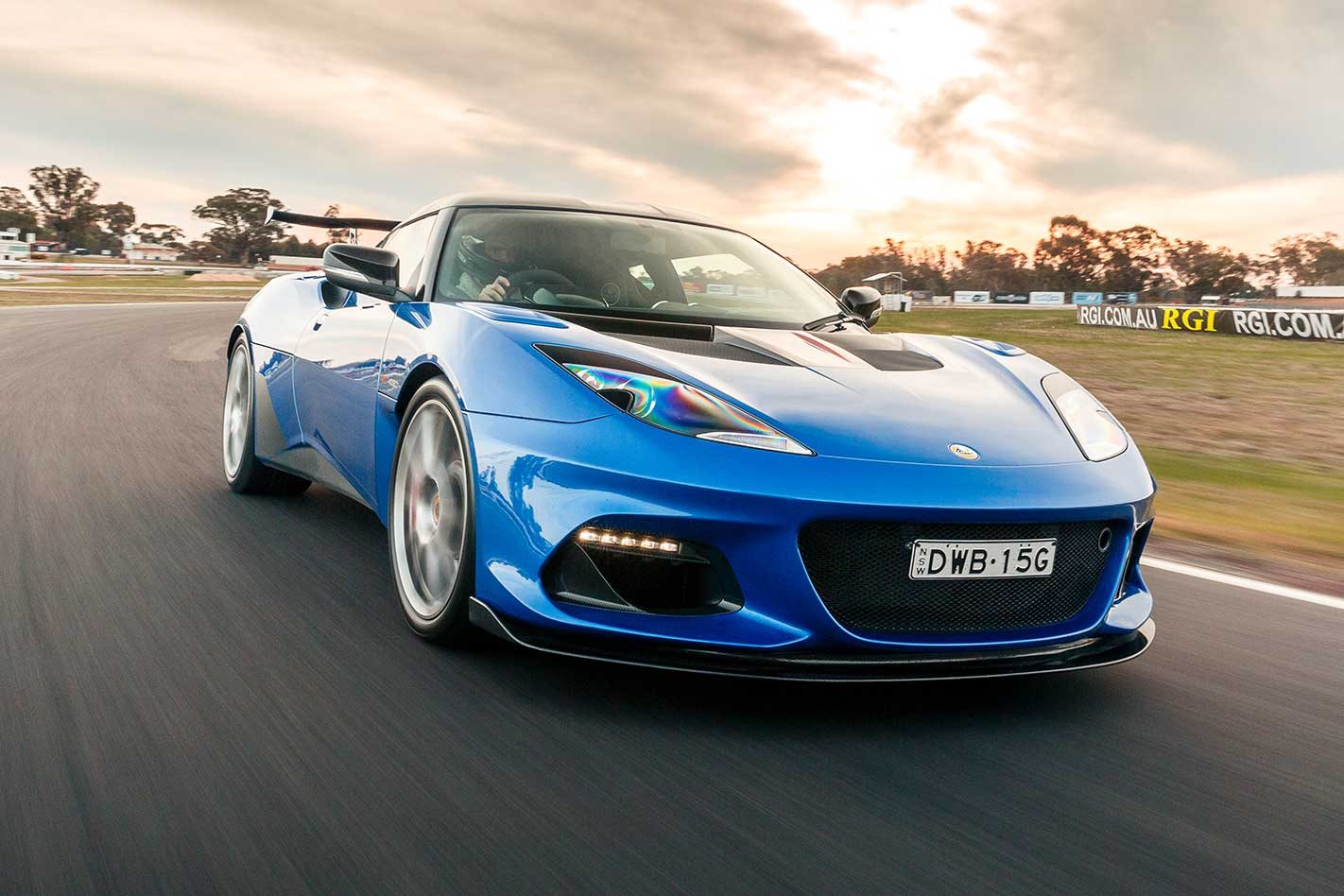It’s been following me for some time, but with a steep rock wall now hugging the side of the road it feels closer than ever. Only when I lower the window, however, does the shocking intensity of the noise emitted by the Lotus Evora GT430 really hit home.
There isn’t a lot of sound deadening in a GT430, but there’s enough to muffle the lightweight titanium exhaust. It’s like standing outside a stadium listening to the concert within – you sense there’s greater enjoyment to be had, if only you could get closer to the action.

It’s probably not what Lotus was aiming for, but it reminds me of a race-spec Torana GTR XU-1. The Evora is smoother and not as gravelly in note, but has a similarly raucous six-cylinder rasp.
It’s been quite a Cinderella story for the 2GR-FE 3.5-litre V6. Initially found powering the Toyota Aurion, Lotus adapted the basic 206kW/350Nm unit to the Evora’s mid-engine, rear-drive layout and then added supercharging for the 257kW/400Nm Evora S.
Since those early days Lotus has kept fiddling, a revised supercharger and water-to-air intercooler lifting outputs to 298kW/410Nm. This ultimate GT430 enjoys a further 33kW/30Nm (40Nm in automatic guise) thanks to recalibrated ignition, fuel and camshaft mapping.
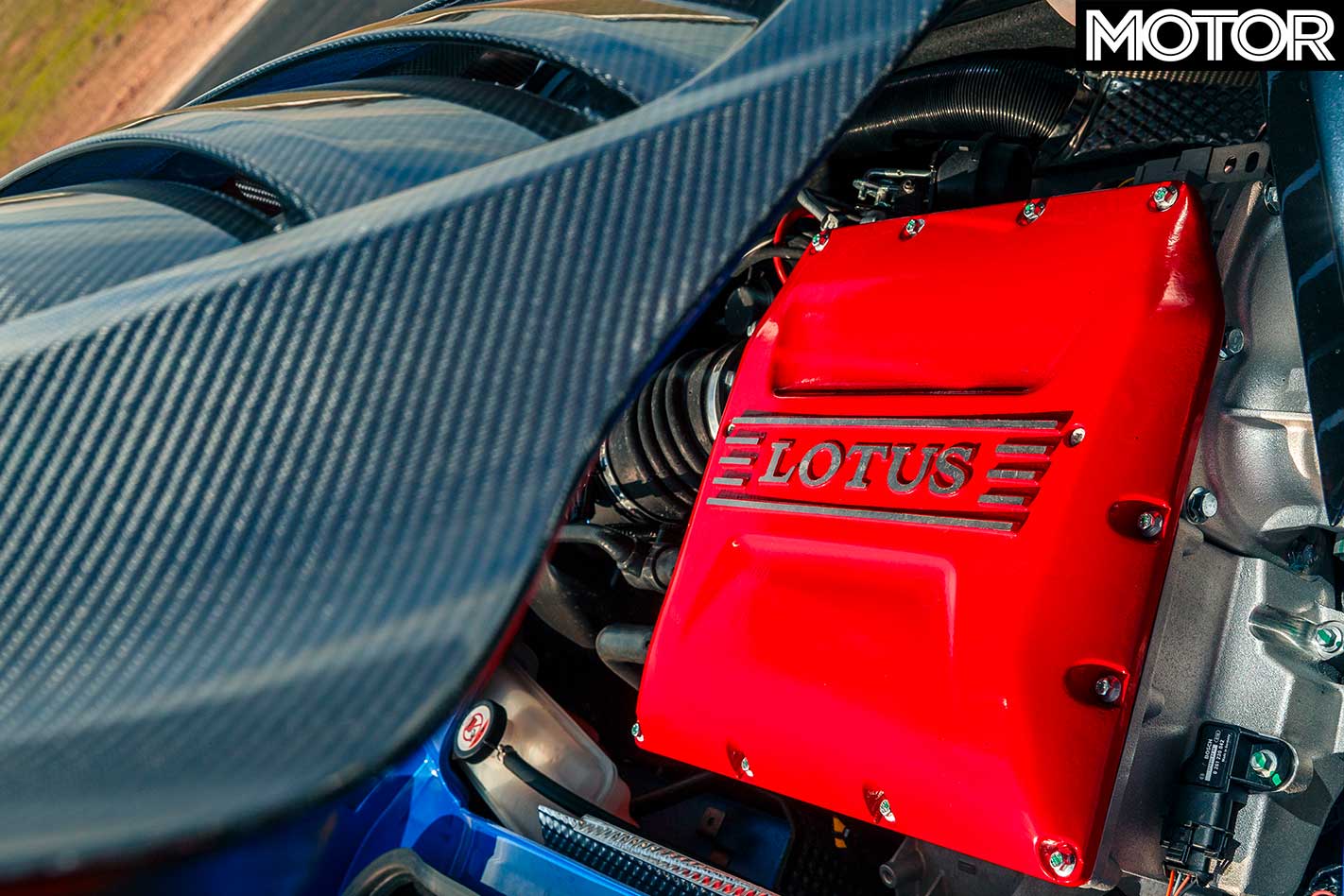
If you weren’t aware, you’d never guess the engine’s ordinary origins from behind the wheel. Supercharged engines are great. The linear nature of the power delivery makes it deceptively quick. A short stab of throttle instantly adds 15-20km/h and you’re often accelerating quicker than expected. It pulls cleanly from low revs, yet power builds right to the 7000rpm cutout.
Another reason to chase the redline is the bi-modal exhaust valves only open above 4500rpm; it’d be great if they were open permanently, but I suspect the ADR microphone would melt.
Lotus claims this upgraded powerplant makes the Evora GT430 its quickest road car ever. The wingless Sport variant manages an impressive 316km/h, but even with wing and splitter fitted it’s capable of 306km/h, while Lotus claims 0-100km/h takes just 3.8sec, or 3.7sec as an automatic. Lotus is either very optimistic, or it has some incredible test drivers.
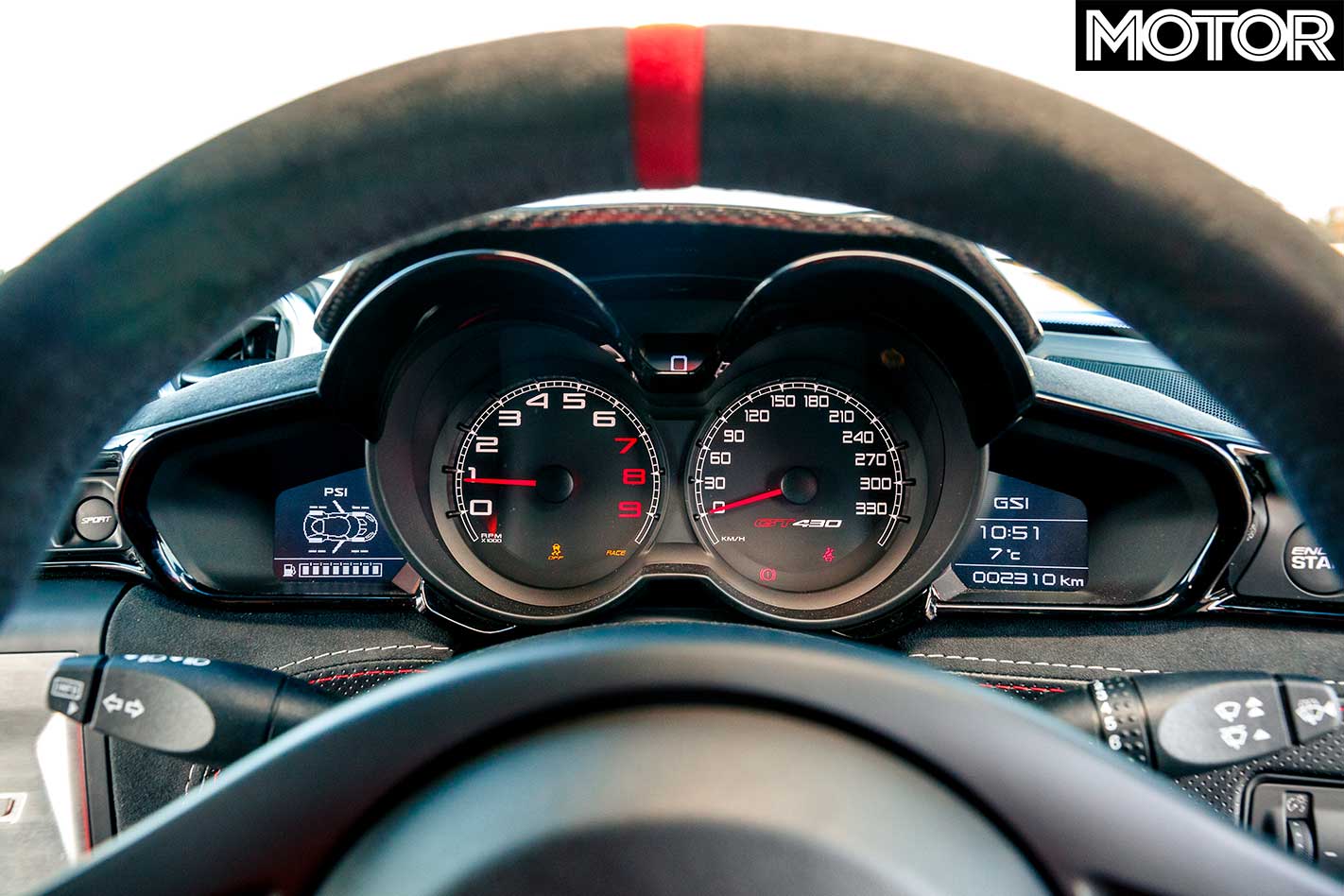
Perhaps there is some magic trick we’re not aware of, but launching the Evora in the traditional rear-drive manner – not too many revs and a hint of wheelslip – yields bests of 4.59sec to 100km/h and 0-400m in 12.64sec at 182.96km/h.
There’s always another tenth or so to be found, but the figures feel about right. The Evora GT430 is plenty quick, but doesn’t have the punch usually associated with sub-4.0sec machines. Adding further challenge to the task is a gearbox that really doesn’t like to be rushed.
Early Evoras used the manual from a Corolla diesel; it was the only ’box capable of linking to the engine and handling the torque. As with the engine, Lotus has done an enormous amount of improvement since then, but a degree of patience is still required to complete clean shifts. It’s no chore to drive in traffic, but on the continual twists and turns of the epic Mansfield-Whitfield Road, I end up leaving it in third and using the engine’s torque.
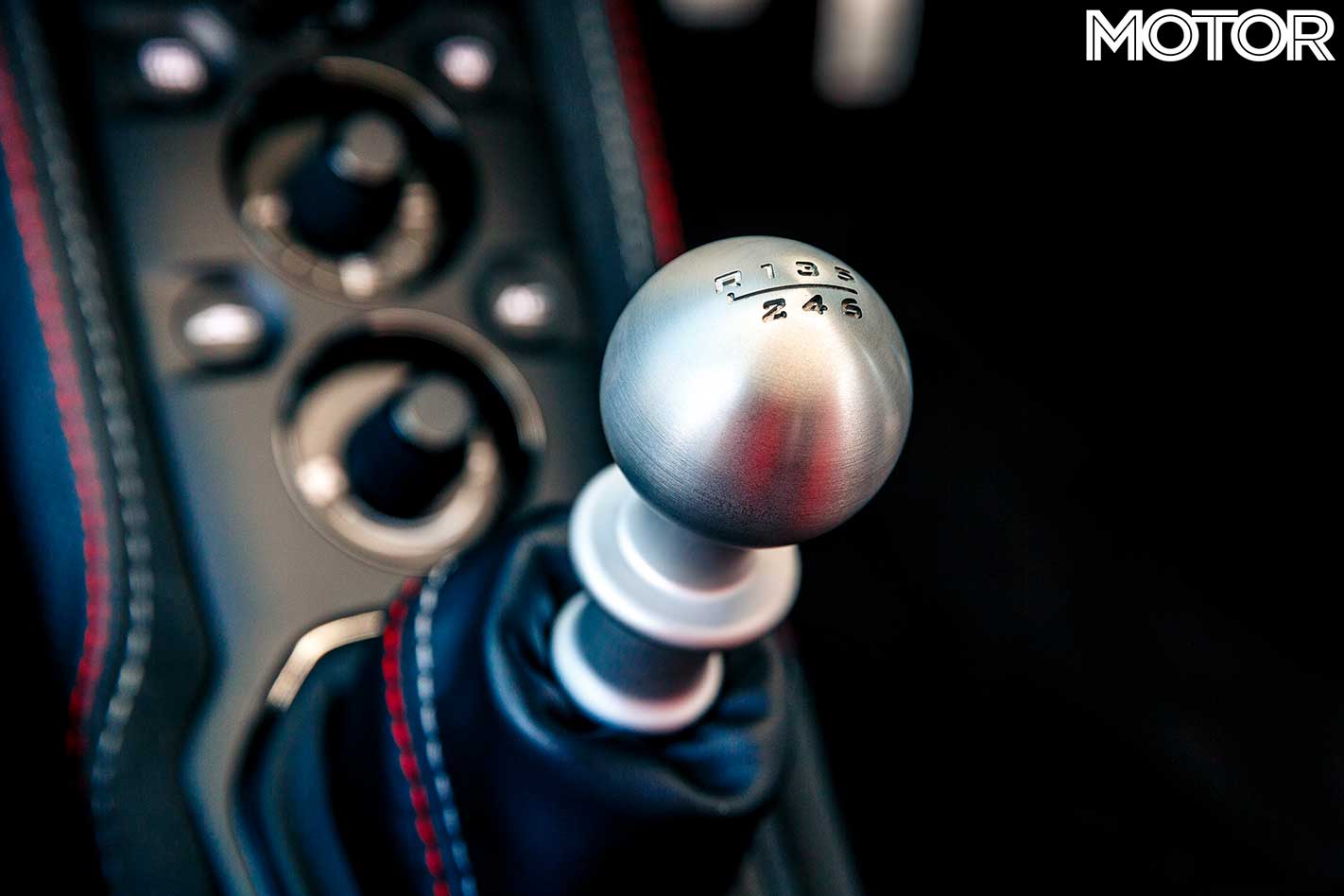
As you’d hope, the Evora comes alive in the bends. The GT430 benefits from lessons learned by racing the Evora GT4, most notably in its use of aerodynamics and 96kg weight loss over the standard Evora 400.
The reshaped edges of the front guards, which also have GT3 RS-style vents carved in the top, exit ports behind the rear wheels and that massive wing combine to create 250kg of downforce at top speed.
Everywhere you look there’s carbon fibre, the roof, front splitter, rear wing, engine cover, front air ducts, rear aero ducts, seats, side sills and monster rear diffuser all making use of the sexy black weave. The titanium exhaust sheds 10kg, the Ohlins two-way adjustable dampers save another 13kg and our test car doesn’t even have a stereo.

Those trick dampers have 20 clicks of compression and rebound adjustment to make the most of the grip offered by Michelin Pilot Sport Cup 2 tyres measuring 245/35 R19 front and 295/30 R20 rear.
With so much rubber and so little weight, the GT430’s lateral adhesion is absurd; it’ll double corner speed advisory signs without breaking a sweat, in some cases triple them. There’s so much grip that the limiting factor becomes your hold on the steering wheel; relax your arms and you realise that what you think is the limit is actually the tension in your muscles.
Barrelling in with overt enthusiasm will eventually instigate understeer, but in most corners the GT430 allows you to clear the brake, turn in and almost immediately get back hard on the throttle. With temperature in the tyres traction is not an issue, though the softness of the brake pedal occasionally is.
The pedal setup is such that heel-toe downshifts under heavy braking require some ankle contortions. A firmer brake pedal – surely appropriate in something this focused? – would improve confidence.
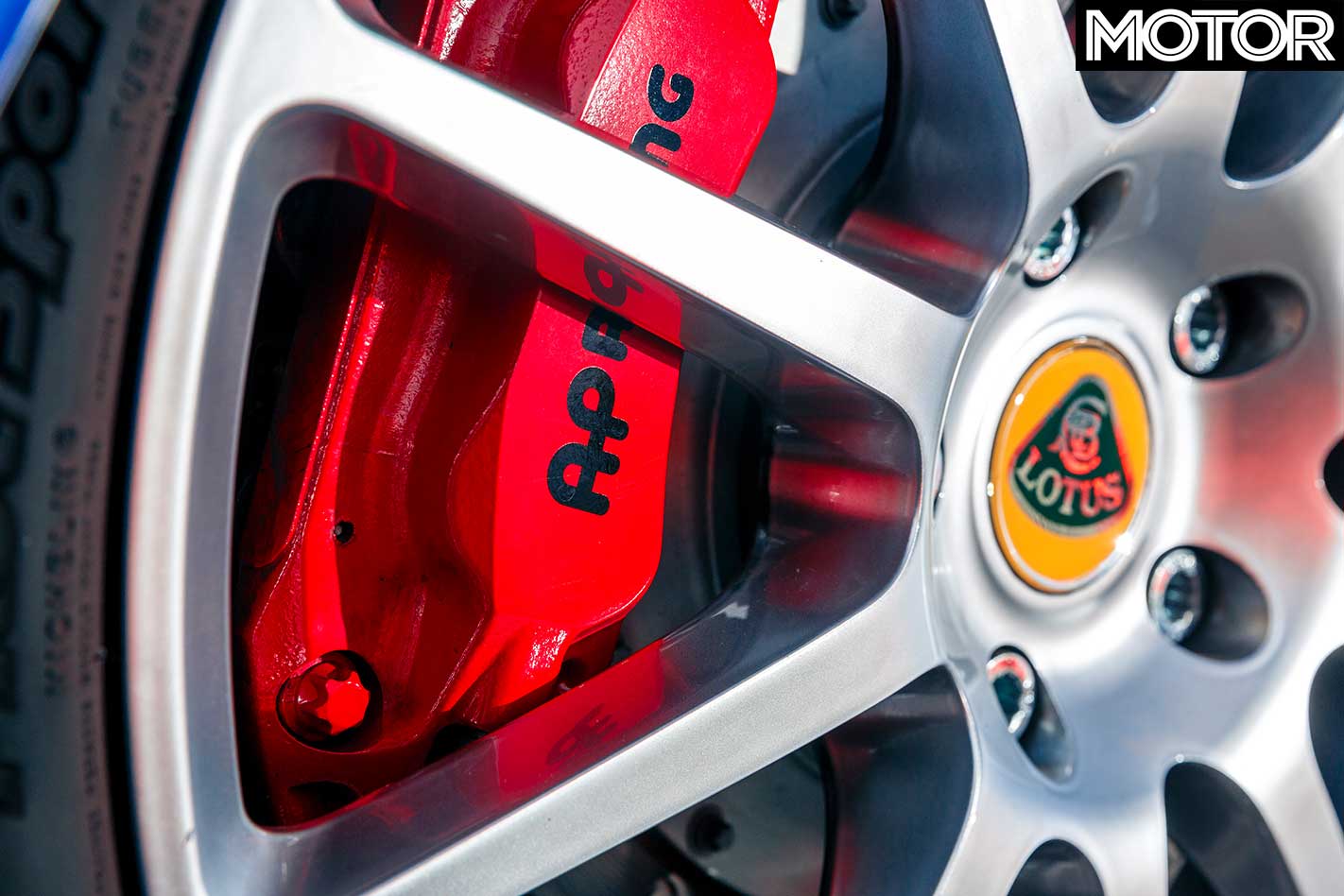
What’s truly impressive about the GT430, though, is that its cornering prowess doesn’t come with a teeth-chattering, skateboard ride, at least not with the dampers set to Lotus’s recommended road settings. Spring rates are increased massively over even the Evora 410 (47 per cent front, 20 per cent rear) but it’s no less comfortable than some hot hatches and never, ever relinquishes its body control.
There’s no crashing – in fact, the complete absence of any squeaks or rattles suggests Lotus’s recent focus on build quality hasn’t been in vain. There are some very cheap plastics inside, but enough carbon, leather and Alcantara to make the cabin feel special.
Although somewhere to put a phone, wallet, keys, a drink (anything!) would be nice. Conversely, storage space is relatively generous, the rear seats replaced by a flat bench in addition to the boot located behind the engine.

There’s certainly enough room for a helmet and an overnight bag, vital equipment for a trip to Winton. The Evora GT430 works better on the road that you’d imagine, but if it’s to justify its enormous $259,990 ($275,867 as-tested) price tag – a $50K premium over the 410 Sport – it’s going to want to shine on track. At this price point it’s perilously close to serious machinery like the Porsche 911 GT3 and Nissan GT-R Nismo.
That the GT430 is the fastest production Lotus around the company’s Hethel test track (essentially Fiorano with tea and scones instead of coffee and pasta) bodes well. Unfortunately, we couldn’t rope a pro driver in to set a lap time, but if I can manage a 1min33.5sec circuit of Winton in just five laps (none of them particularly clean) it seems likely there’s a couple of seconds to be found by more capable hands.
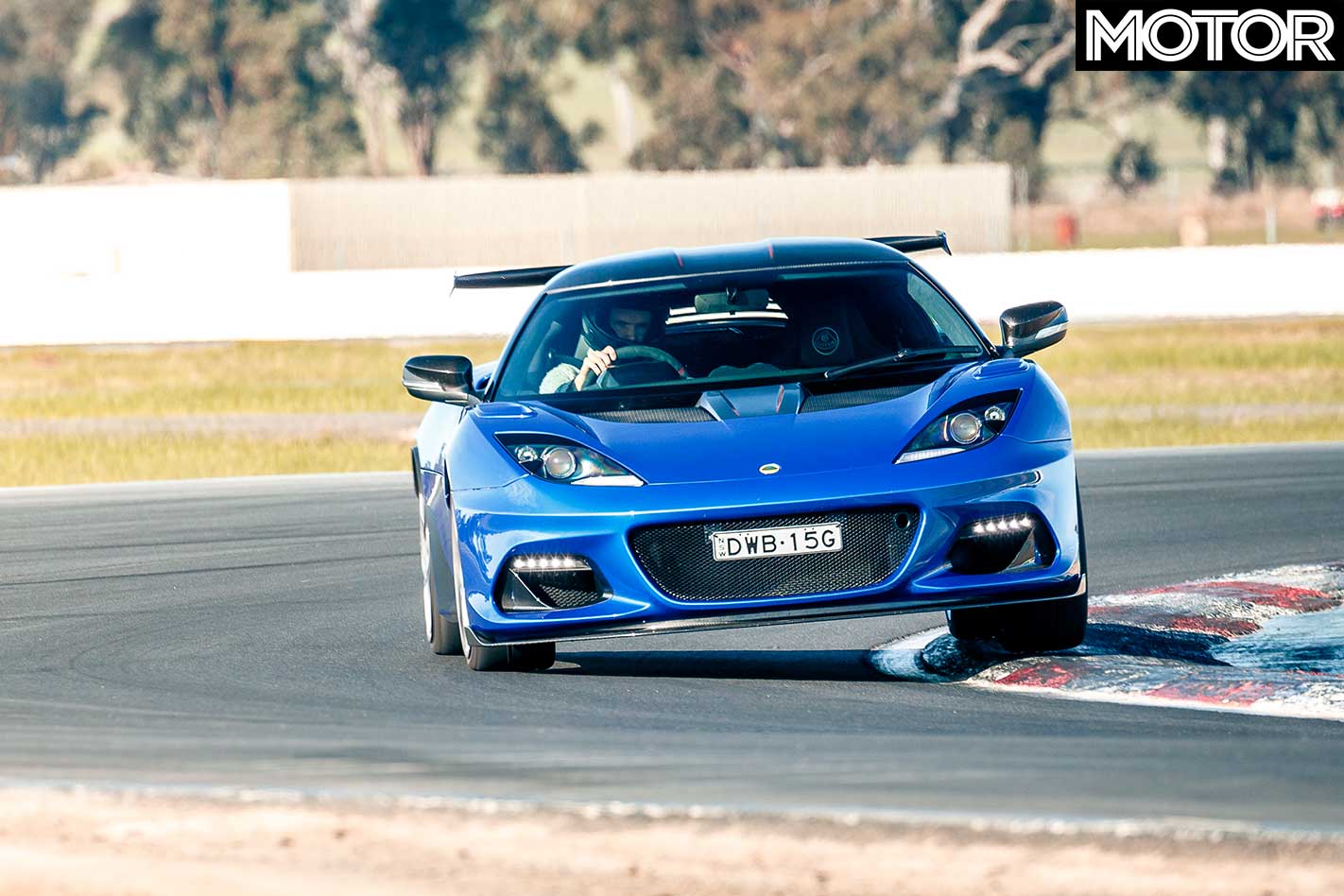
Track work exacerbates the Evora’s on-road attributes, good and bad. Its grip remains stupendous; as you’d hope, its average apex speed would have topped the list at our recent Bang For Your Bucks test, but to out-corner a Civic Type R is no mean feat.
Its 83.16km/h average would be higher, but the understeer that only appeared occasionally on the road becomes persistent on track. It’s mild and no doubt easily dialled out via the dampers, but delays how quickly the throttle can be re-applied in almost every corner.
Drive to the available front grip and there’s the feeling that there is time to be gained if you could get on the gas earlier. There’s certainly sense in providing an understeer bias for this road setup, but on the track more front bite would pay dividends in enjoyment and lap time.
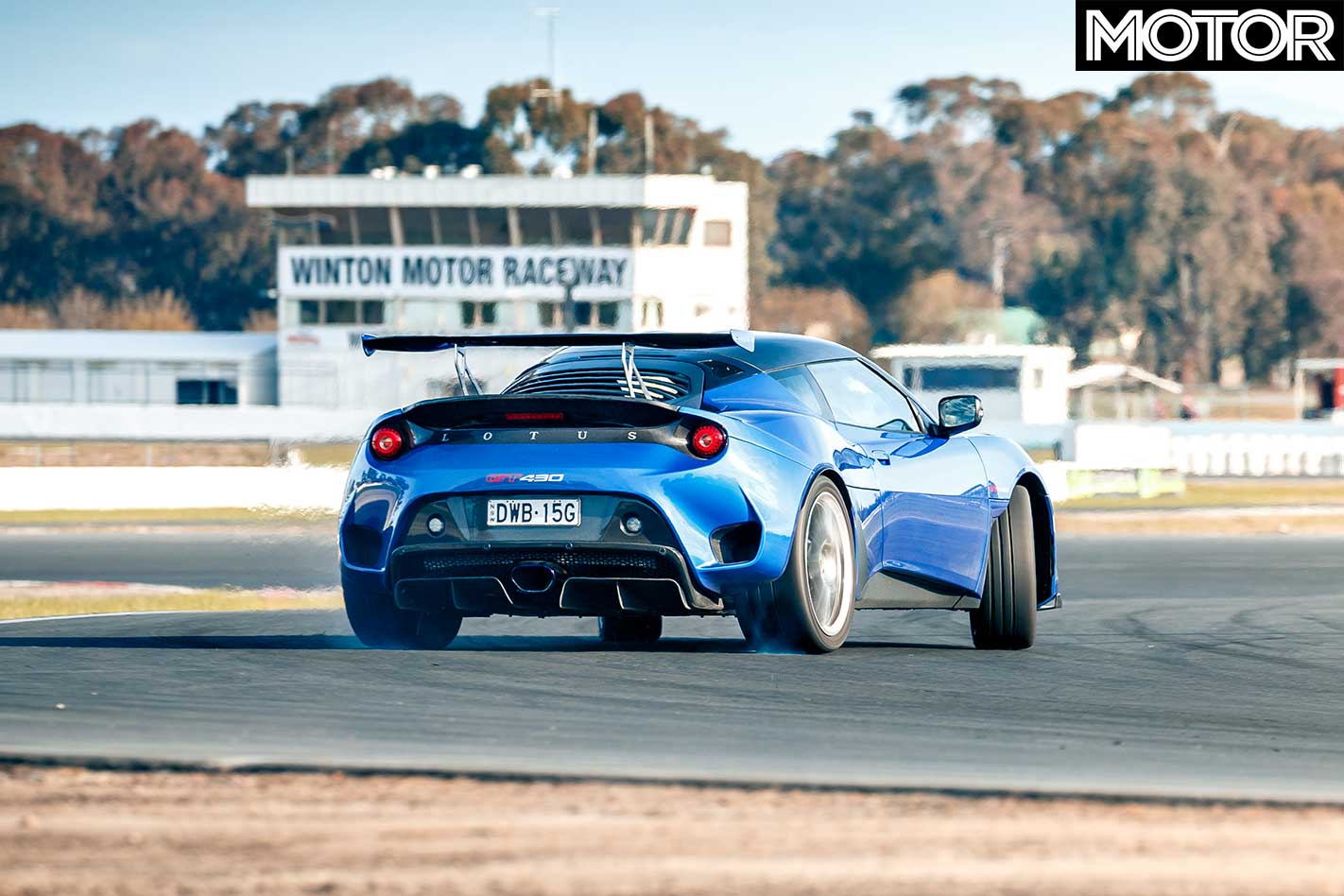
At the limit Lotus’s race-spec six-stage traction control comes into its own. To be honest, the ESP calibration in Race mode is so good, so lenient and unobtrusive in its intervention, that in the dry there’s no need to turn ESP off.
Nonetheless, from there Lotus gives you the option to gradually reduce the traction control intervention and allow greater levels of wheelslip, from 1 per cent to a maximum of 12 per cent, with the sixth stage being completely off.
Be sure of yourself before taking that last step. The Evora has an immense amount of grip, but when it runs out immediate action is required; the first attempt at a cheeky low-speed slide results in a 360-degree spin before you could say “opposite lock”. The GT430 can certainly hold a mean powerslide, but needs serious provocation to do so – it would rather just keep setting lap times.
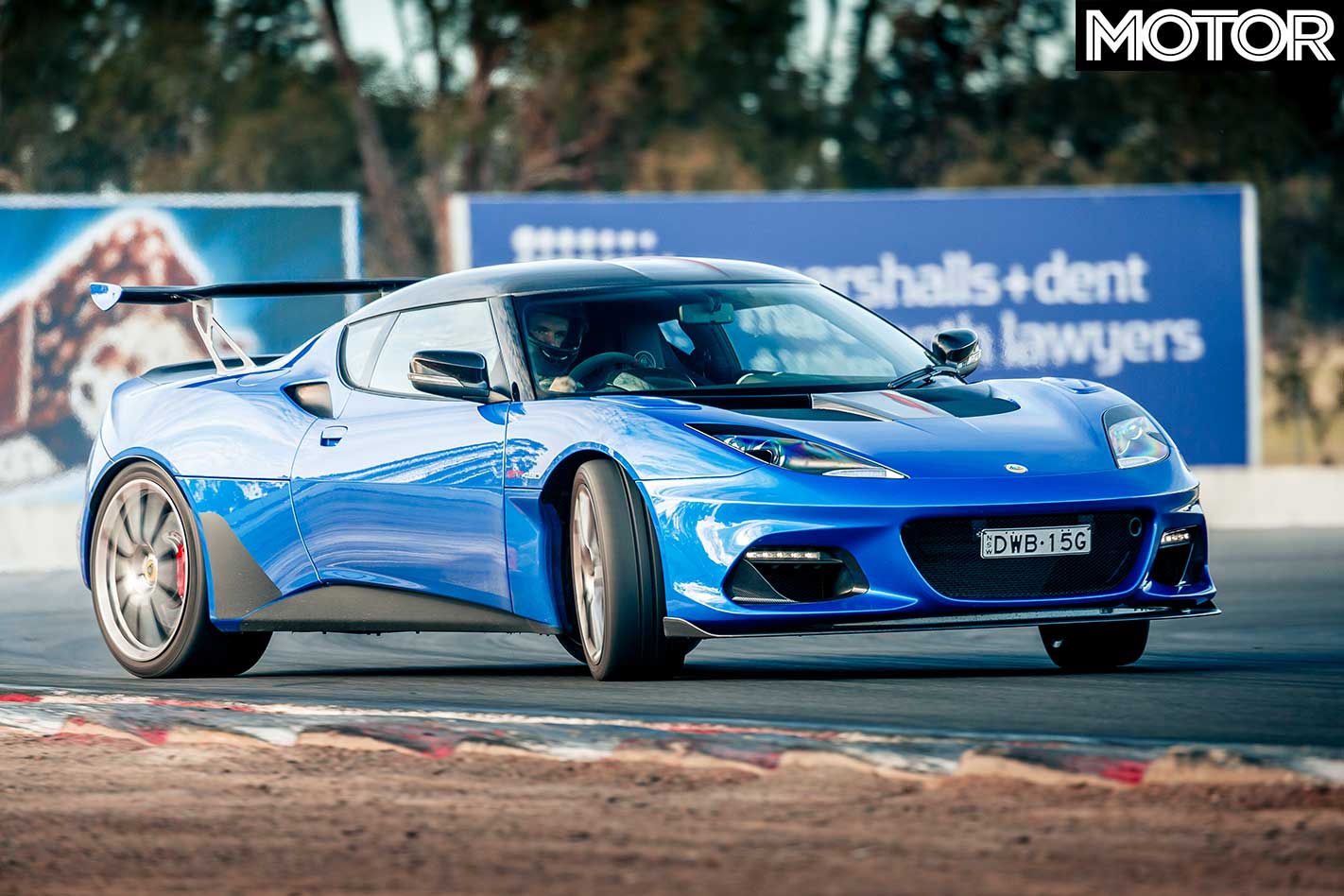
Suspension setup aside, the greatest barrier to lowering lap times is the gearbox. Just as on the road, the ’box wants to operate at its own pace and a number of laps end early after a mis-shift. Precious tenths disappear on upshifts and the GT430’s super-short braking distances make the quick downchanges required a lottery. It’s enough of an annoyance to make the optional six-speed automatic well worth considering.
If you are considering an Evora GT430, then you’d better be quick. Lotus is making just 60 each of it and the Sport and just four of the winged warriors are coming to Oz. Three are already sold. At which point objective assessment becomes slightly irrelevant.
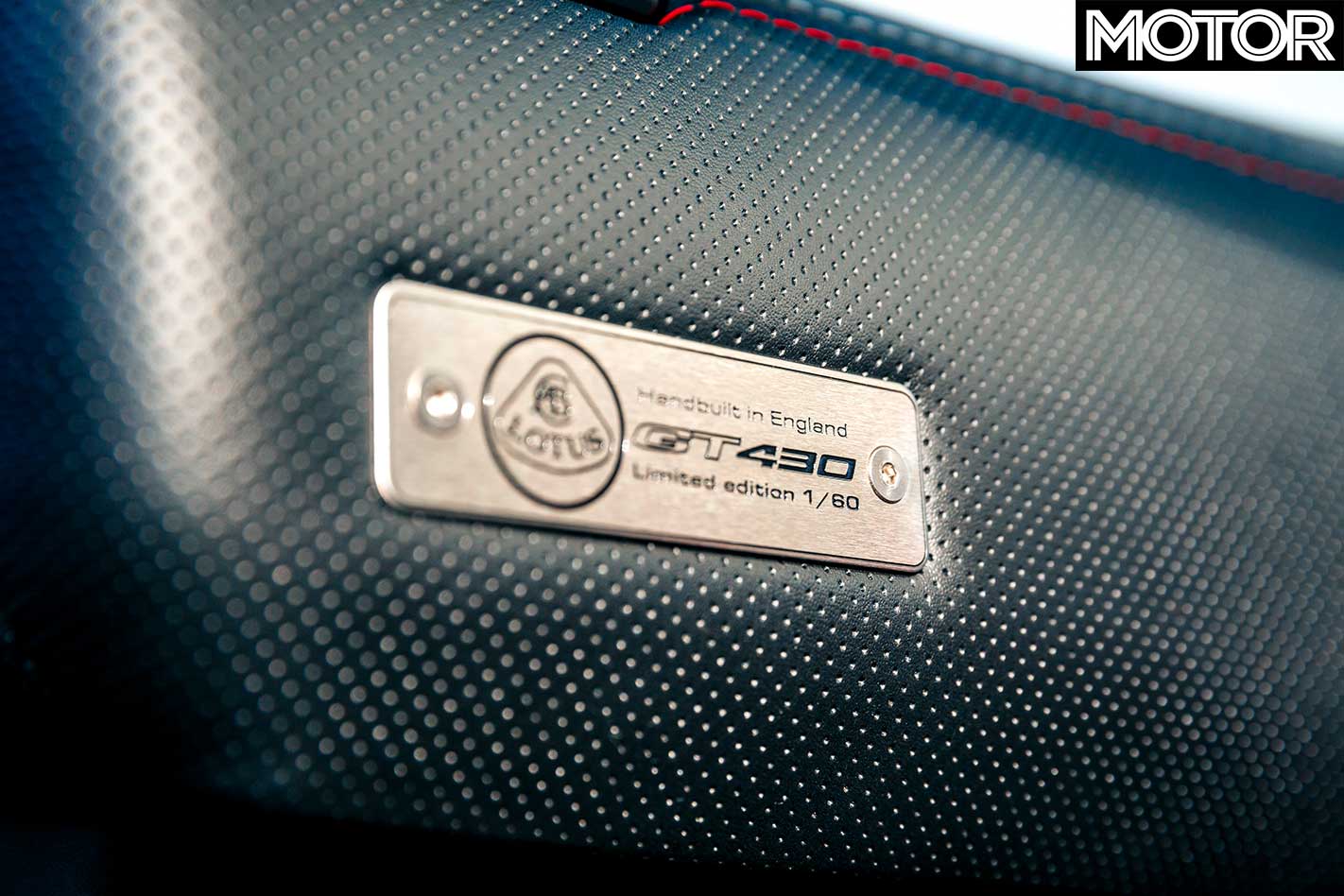
It’s all too easy to say it’s not as good as a 911 GT3, but I suspect for those three buyers the fact the Evora is not a GT3 was a very good reason to purchase one. The GT430 looks awesome, sounds incredible, is great to drive, extremely rare and refreshingly different.
Nonetheless, if you’re a track junkie your needs might be better met by the lighter, quicker, sharper Exige Cup 430. If road use with the occasional track foray is more your thing, the Evora GT410 Sport offers most of the performance and, crucially, all of the noise of the GT430 with a few more creature comforts.
Then again, if you’re a Lotus fan with a carbon fetish who places a premium on exclusivity, there is literally only one car for you. Act fast.
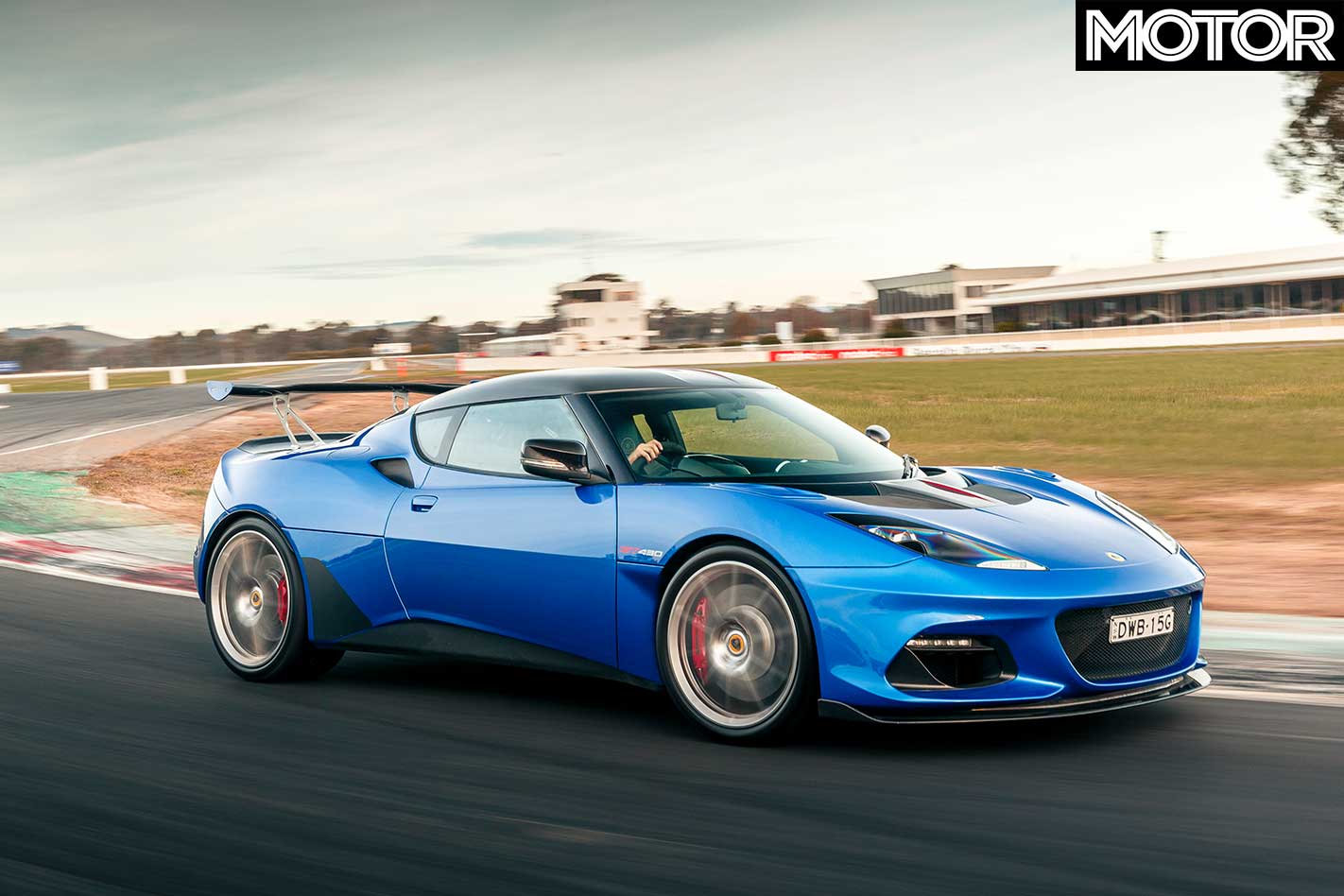
FAST FACTS 2018 Lotus Evora GT430
BODY: 2-door, 2-seat coupe DRIVE: rear-wheel ENGINE: 3456cc V6, DOHC, 24v, supercharger BORE/STROKE: 94.0mm x 83.0mm COMPRESSION: 10.8:1 POWER: 321kW @ 7000rpm TORQUE: 440Nm @ 4500rpm WEIGHT: 1299kg POWER-TO-WEIGHT: 247kW/tonne TRANSMISSION: 6-speed manual SUSPENSION: double wishbones, coil springs, anti-roll bar (f/r) L/W/h: 4394/1845/1240mm WHEELBASE: 2575mm TRACKS: 1564/1575mm (f/r) STEERING: hydraulically-assisted rack-and-pinion BRAKES: 370mm ventilated/grooved discs, 4-piston calipers (f); 350mm ventilated/grooved discs, 4-piston calipers (r) WHEELS: 19.0 x 8.0-inch (f); 20 x 10.5-inch (r) TYRES: Michelin Pilot Sport Cup 2; 245/35 R19 (f), 295/30 R 20 (r) PRICE: $259,990 ($275,687 as tested)
PROS: Grip; exclusivity; noise; clever traction control CONS: Rivals much quicker; gearshift; price RATING: 3.5 out of 5 stars
The Strip
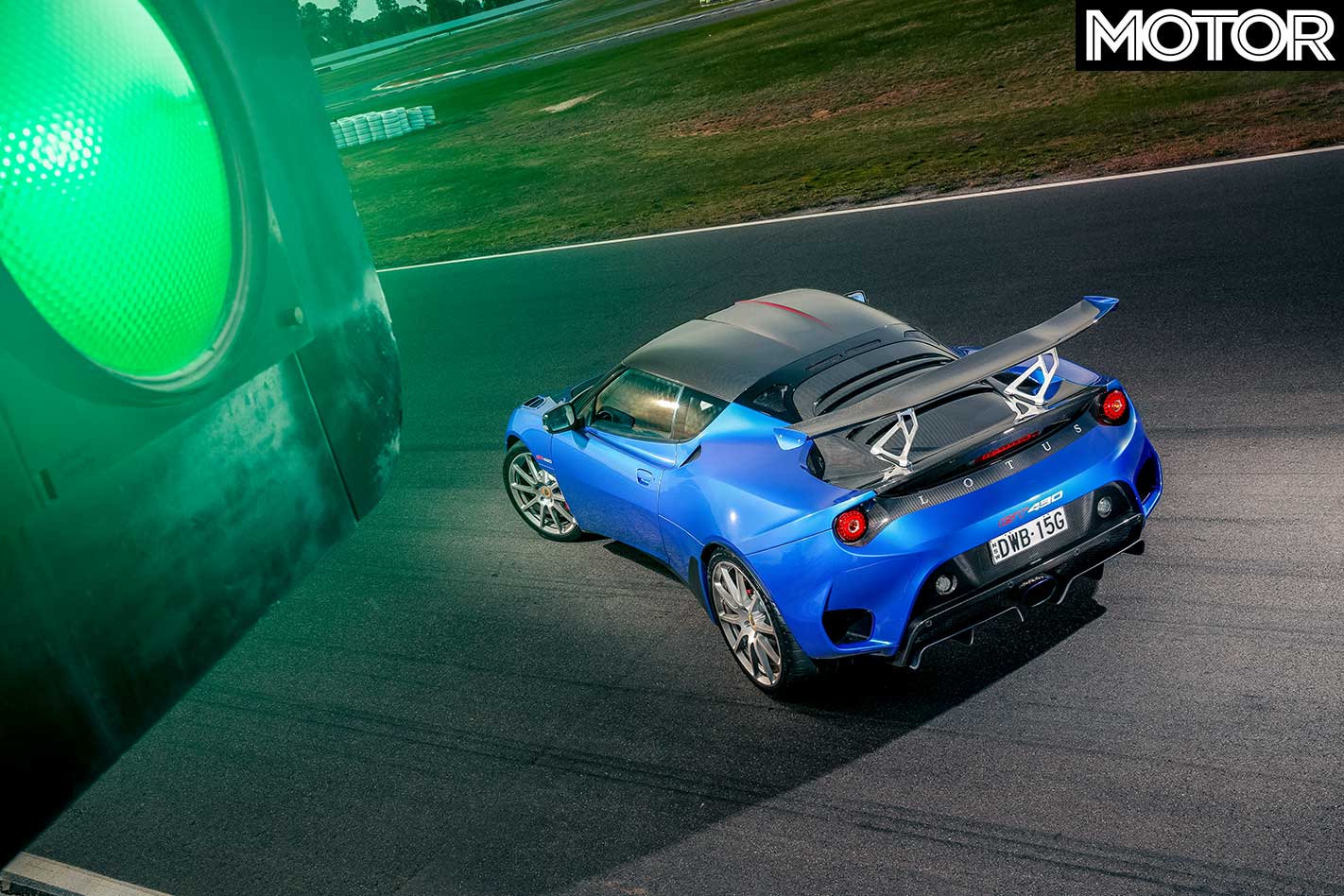
| Lotus Evora GT430 | |
| 0-10km/h | 0.40sec |
| 0-20km/h | 0.79sec |
| 0-30km/h | 1.13sec |
| 0-40km/h | 1.43sec |
| 0-50km/h | 1.79sec |
| 0-60km/h | 2.18sec |
| 0-70km/h | 2.91sec |
| 0-80km/h | 3.45sec |
| 0-90km/h | 4.01sec |
| 0-100km/h | 4.59sec |
| 0-110km/h | 5.17sec |
| 0-120km/h | 6.06sec |
| 0-130km/h | 6.91sec |
| 0-140km/h | 7.72sec |
| 0-150km/h | 8.57sec |
| 0-160km/h | 9.43sec |
| 0-170km/h | 10.94sec |
| 0-180km/h | 12.24sec |
| 0-400m | 12.64sec @ 182.96km/h |
| 100-0km/h | 33.13m |
| Lap time | 1min 33.5sec |
| Speed in gears | |
| 1st | 68km/h @ 7000rpm |
| 2nd | 125km/h @ 7000rpm |
| 3rd | 170km/h @ 7000rpm |
| 4th | 219km/h @ 7000rpm |
| 5th | 288km/h @ 7000rpm |
| 6th | 306km/h @ 6600rpm* |
Winton Raceway, 12˚C, dry Driver: Scott Newman *Manufacturer’s claim


